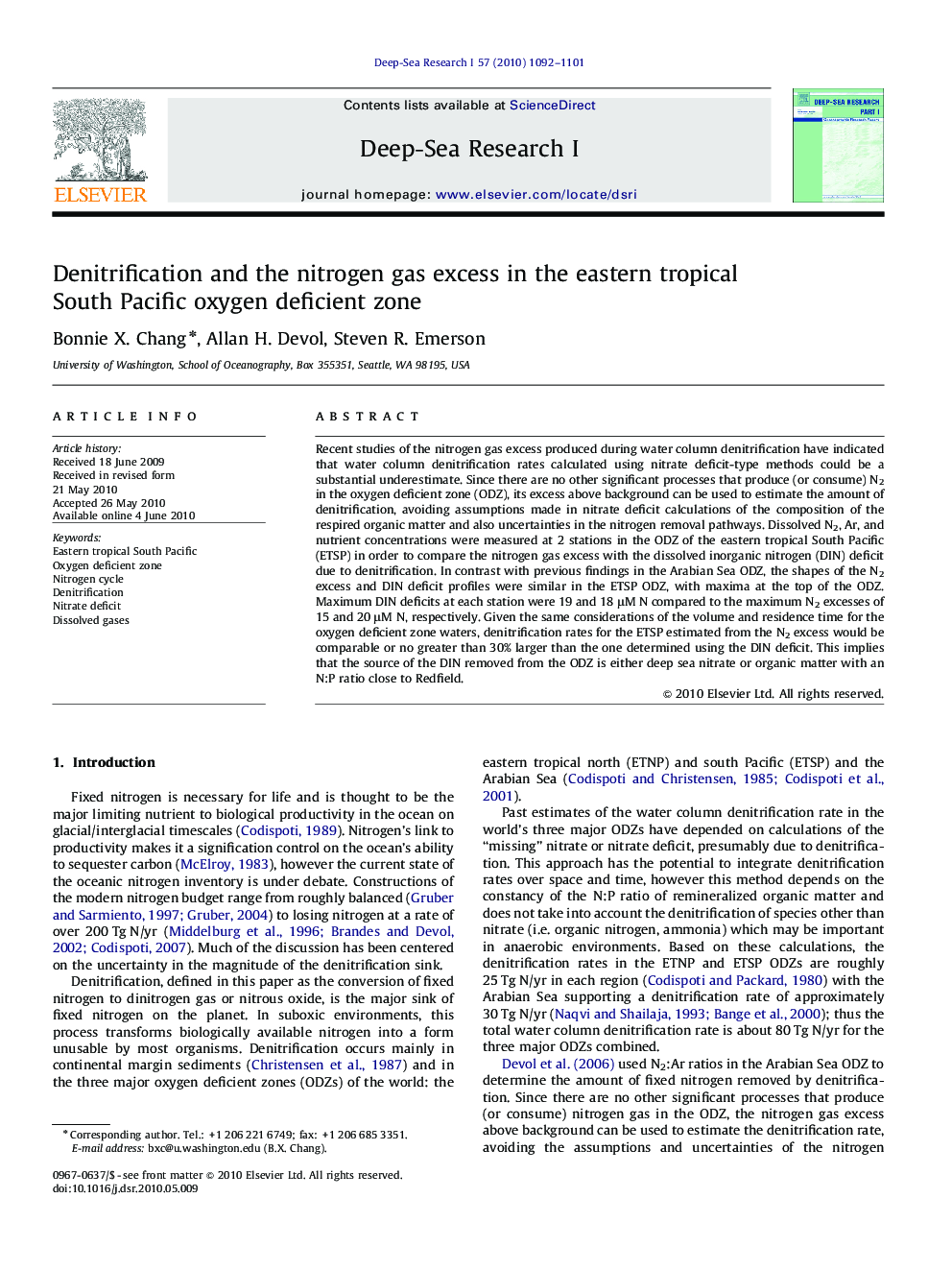| Article ID | Journal | Published Year | Pages | File Type |
|---|---|---|---|---|
| 4535008 | Deep Sea Research Part I: Oceanographic Research Papers | 2010 | 10 Pages |
Recent studies of the nitrogen gas excess produced during water column denitrification have indicated that water column denitrification rates calculated using nitrate deficit-type methods could be a substantial underestimate. Since there are no other significant processes that produce (or consume) N2 in the oxygen deficient zone (ODZ), its excess above background can be used to estimate the amount of denitrification, avoiding assumptions made in nitrate deficit calculations of the composition of the respired organic matter and also uncertainties in the nitrogen removal pathways. Dissolved N2, Ar, and nutrient concentrations were measured at 2 stations in the ODZ of the eastern tropical South Pacific (ETSP) in order to compare the nitrogen gas excess with the dissolved inorganic nitrogen (DIN) deficit due to denitrification. In contrast with previous findings in the Arabian Sea ODZ, the shapes of the N2 excess and DIN deficit profiles were similar in the ETSP ODZ, with maxima at the top of the ODZ. Maximum DIN deficits at each station were 19 and 18 μM N compared to the maximum N2 excesses of 15 and 20 μM N, respectively. Given the same considerations of the volume and residence time for the oxygen deficient zone waters, denitrification rates for the ETSP estimated from the N2 excess would be comparable or no greater than 30% larger than the one determined using the DIN deficit. This implies that the source of the DIN removed from the ODZ is either deep sea nitrate or organic matter with an N:P ratio close to Redfield.
